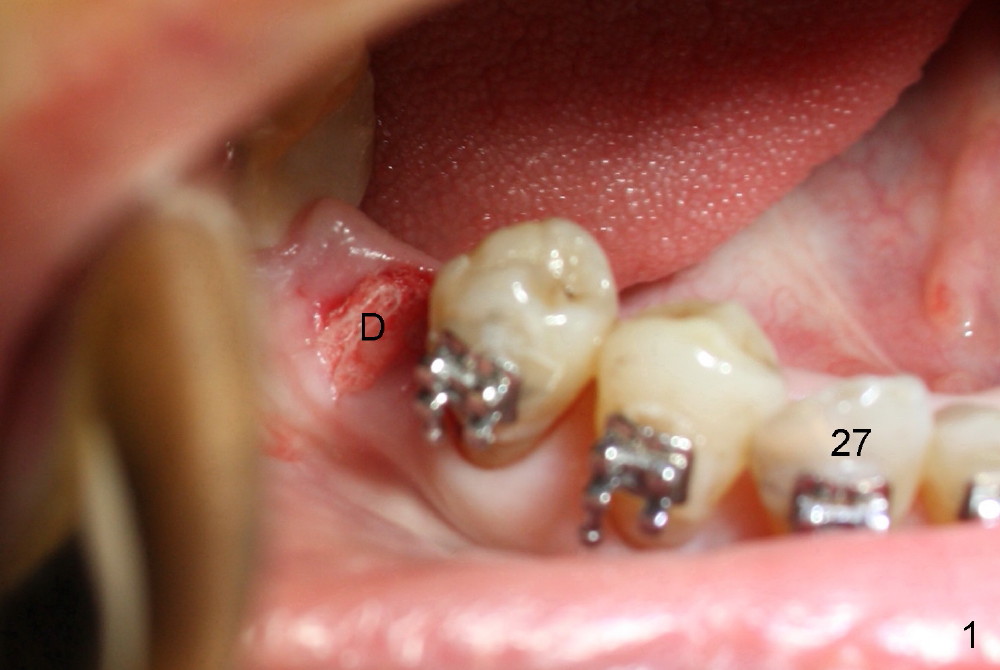
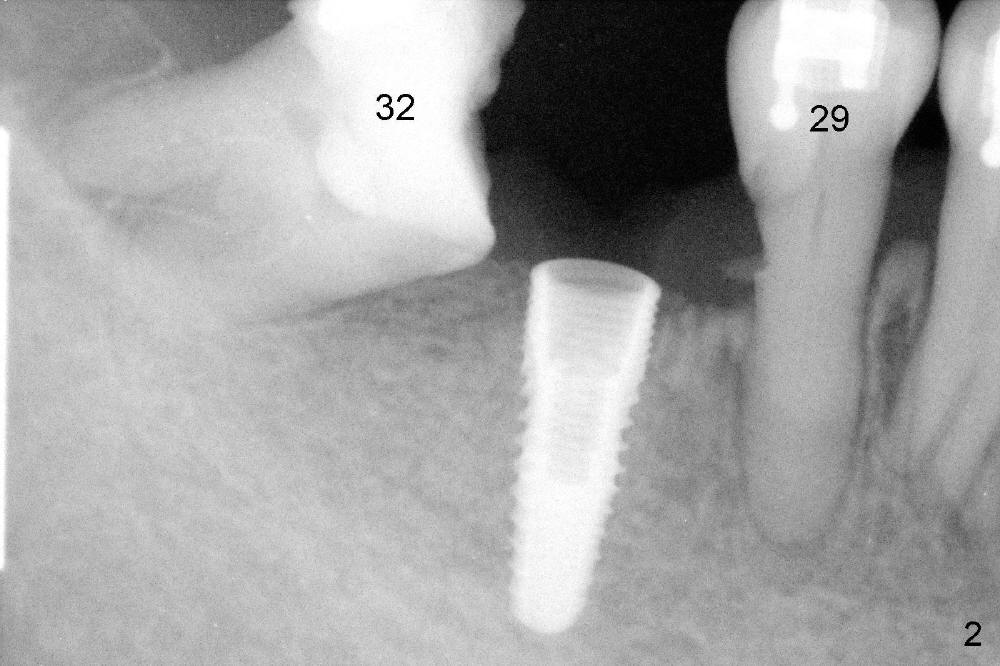
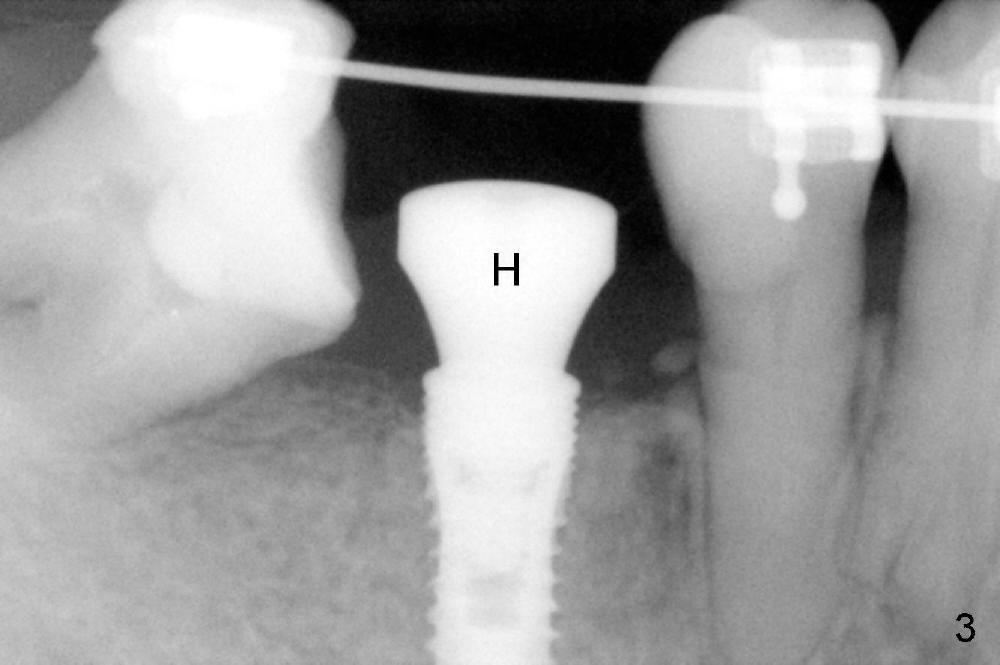
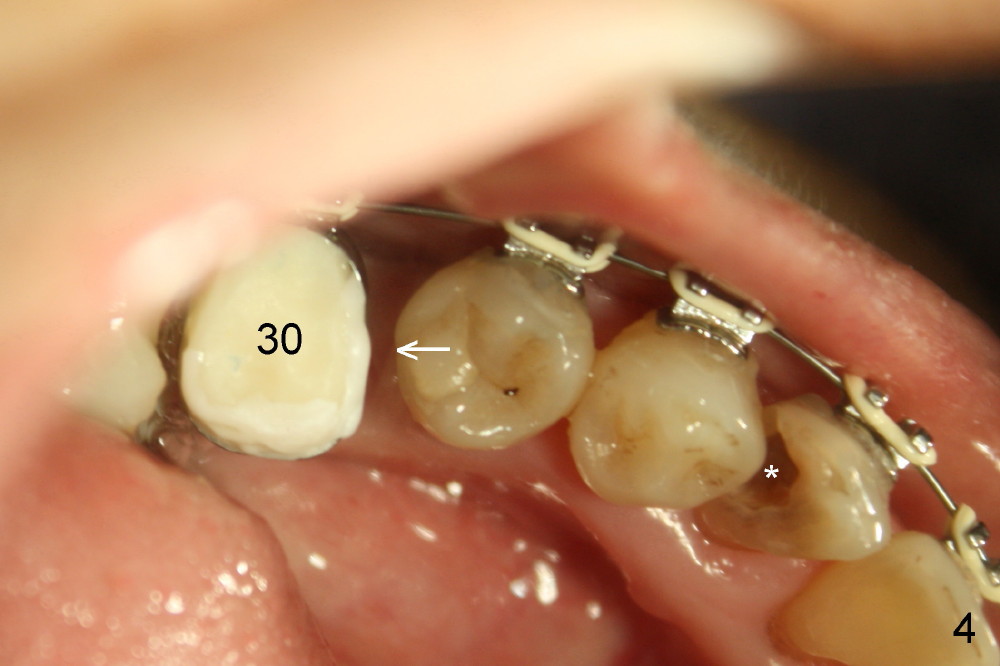
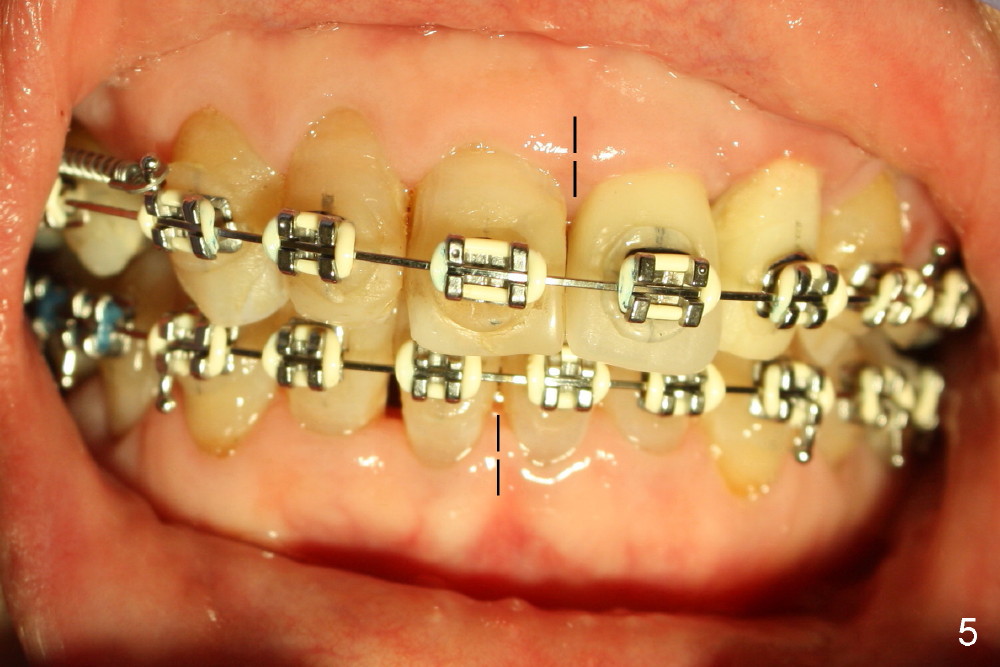
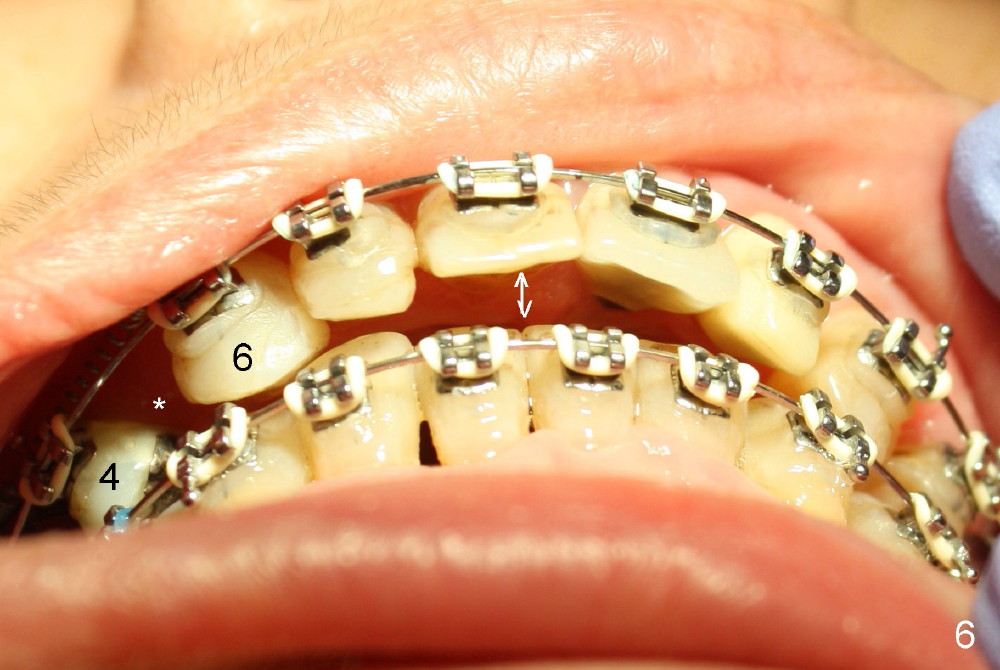
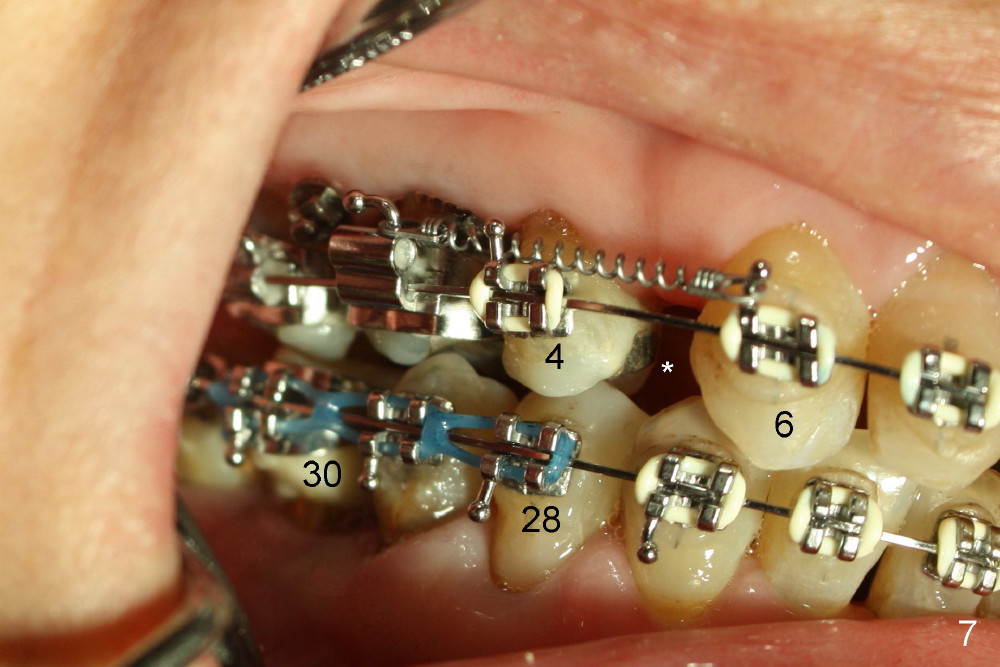
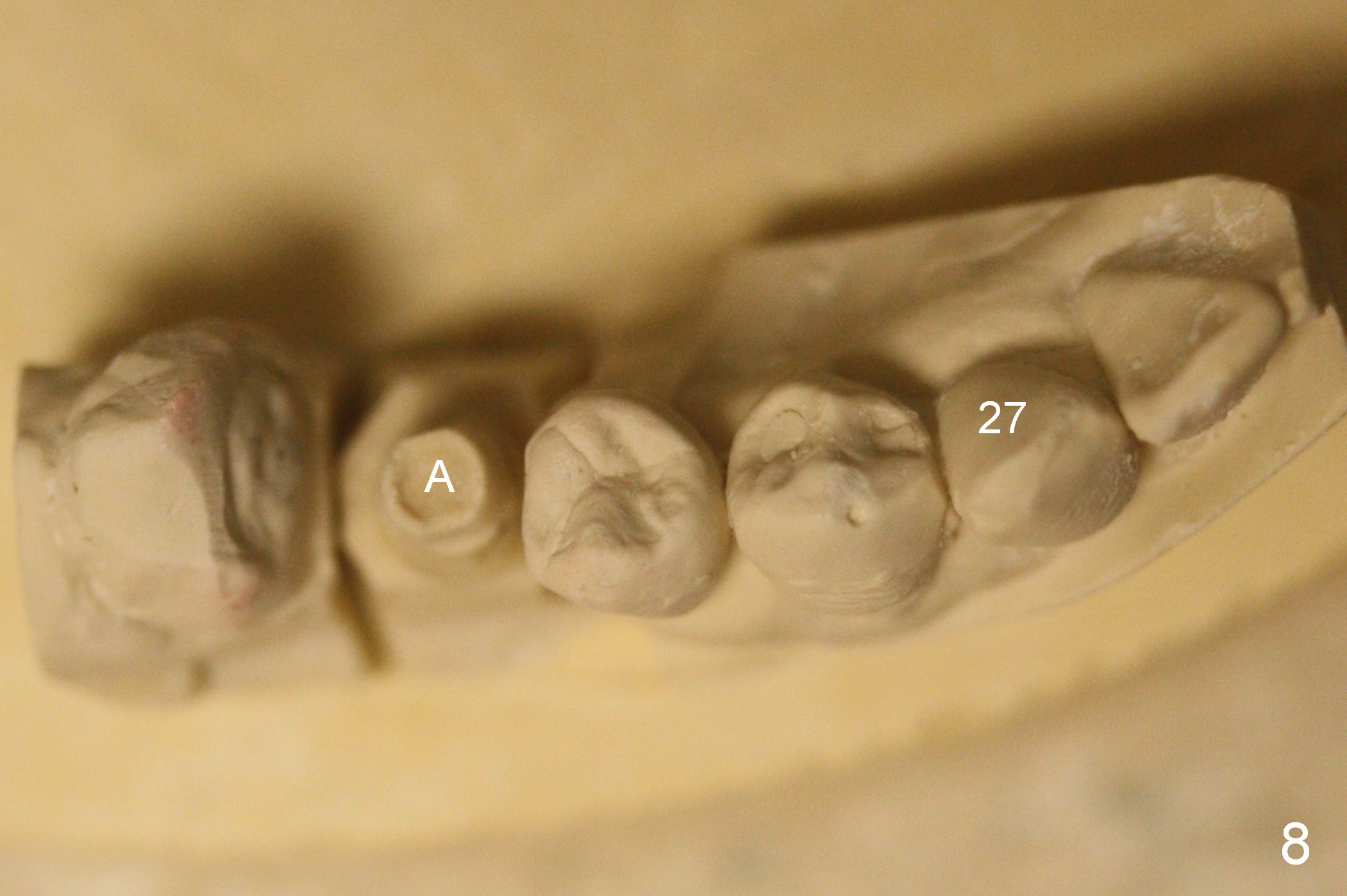
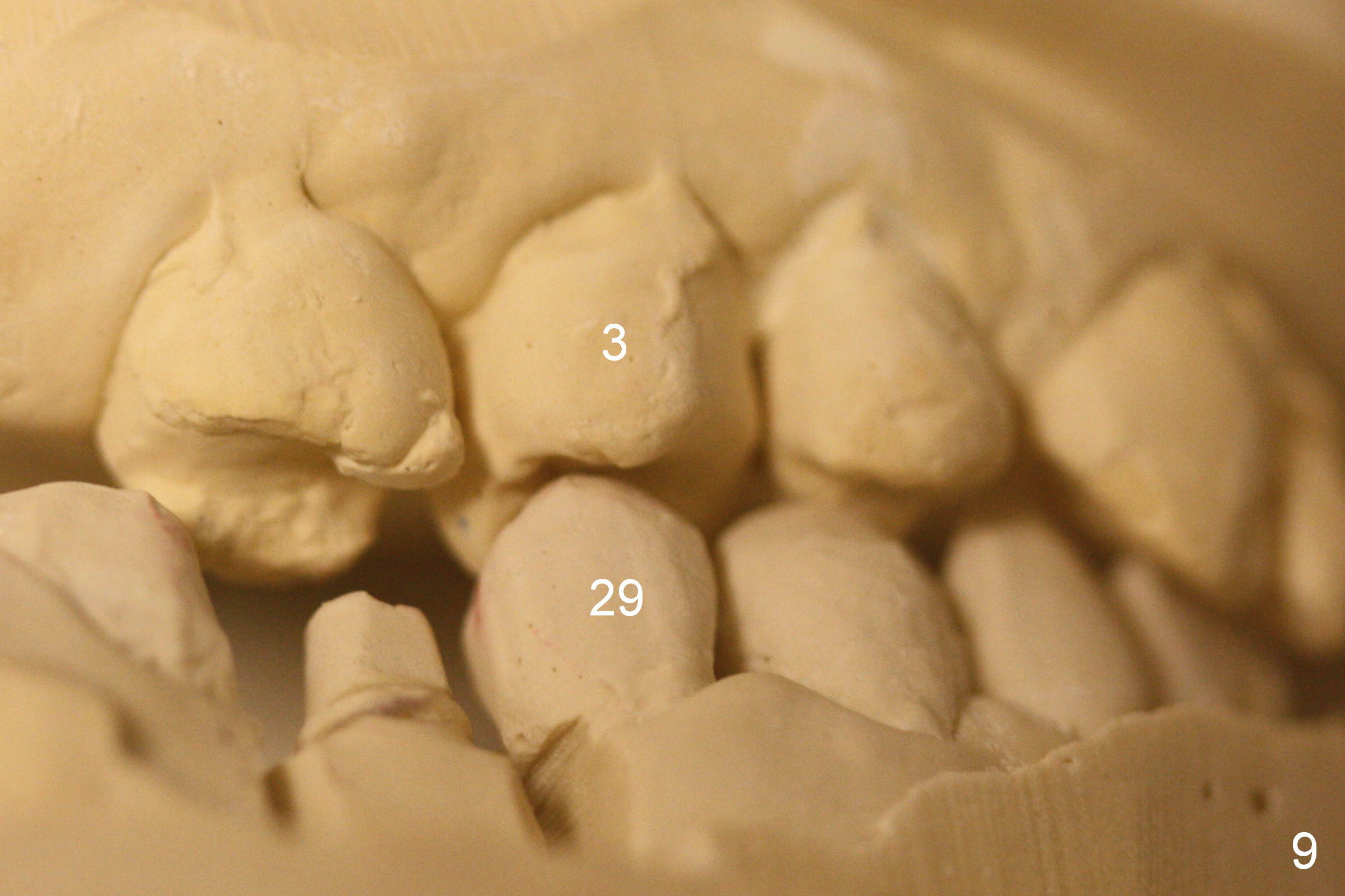
 |
 |
 |
 |
 |
 |
 |
 |
 |
Implant as Anchorage
The malpositioned #29 was distalized using #32 as an anchorage. Crowding exists around #27 (Fig.1). To distalize #28 and 29 more effectively, an implant is placed at the distal socket of #30 (Fig.1 D; Fig.2).
Four months later, the implant appears to have osteointegrated (Fig.3; H: healing abutment).
An abutment is placed; a provisional is fabricated, a premolar band is tried in and cemented (Fig.4: #30). Next visit, the implant will be used as an anchorage to distalize #29 and 28 (arrow) so that there is enough space to restore the distal defect of #27 (*).
The upper midline seems to be deviated to the left (Fig.5 dashed lines). There is large anterior overjet (Fig.6 double arrows). The space between #4 and 6 (Fig.6,7 *) is to be closed by a closed spring between.#3 and 6, whereas the space mesial to #30 (Fig.4) will be closed by power chain between #28 and 30 (Fig.7) so that the tooth #27 has space to rotate and the distolingual caries is to be excavated (*).
Several months later, the goal is achieved (Fig.8,9). A definitive restoration is fabricated over the abutment (A) at the site of #30.
Return to Professionals,
Implant & Ortho
2
Finish
Xin Wei, DDS, PhD, MS 1st edition 09/07/2014, last revision 01/13/2018